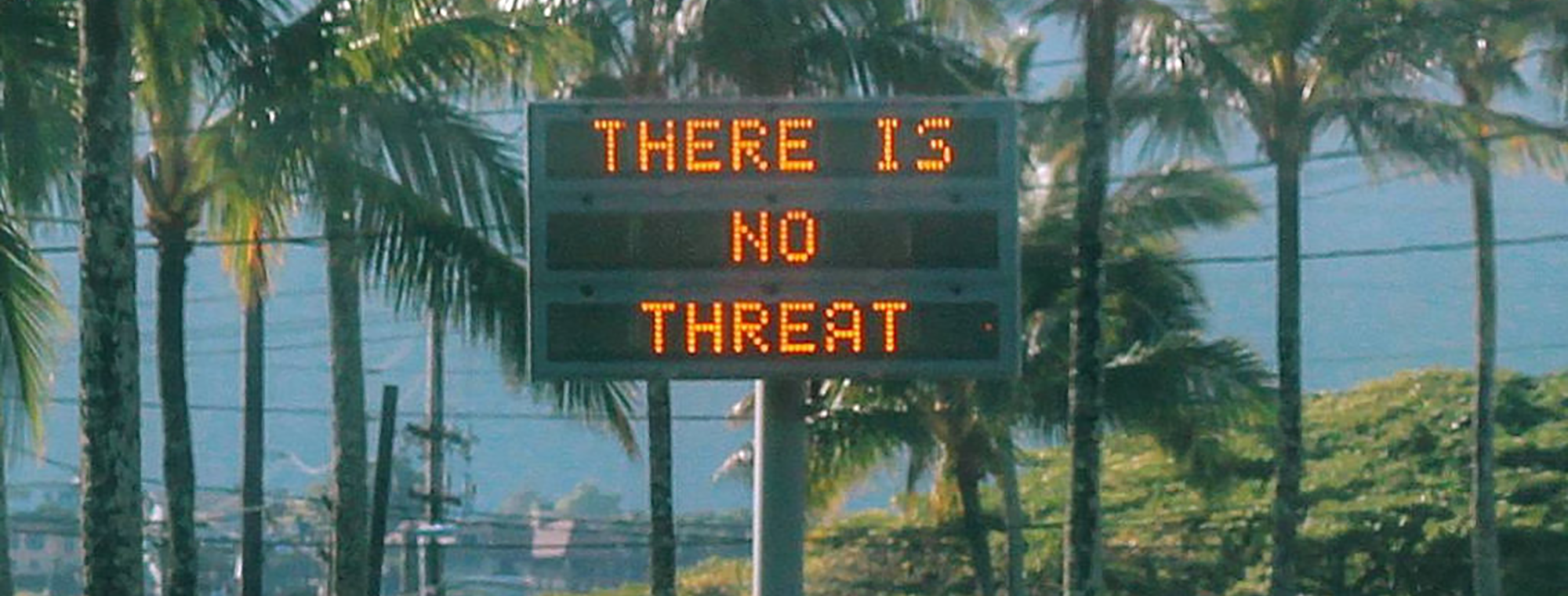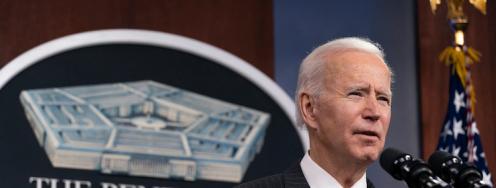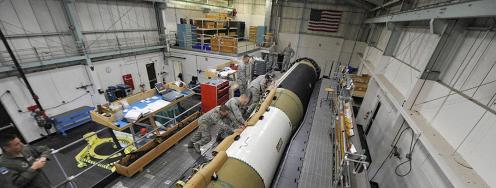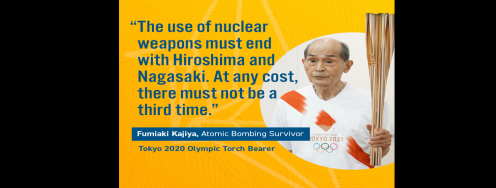by Zack Brown, originally published in The National Interest. Listen to the whole episode on Press the Button.
Nuclear expert James Acton believes that we are entering into an era of what he calls “nuclear entanglement,” one that promises to be different from anything we’ve seen before. It’s main characteristic: an increasingly blurry line between nuclear and conventional weapons.
“During the Cold War, the nuclear and non-nuclear domains were largely distinct,” said Acton in an interview for the podcast, Press The Button. “Most delivery systems were nuclear or they were conventional, but they couldn’t accommodate both types of weapons.” The same goes for the threats facing nuclear weapons themselves. The majority of these, he explained, “came from other nuclear weapons.”
Not that the divide was ever airtight, cautioned Acton, co-director of the Nuclear Policy Program at the Carnegie Endowment for International Peace. There have always been some dual-use systems that could accommodate both nuclear and non-nuclear munitions. And certain conventional platforms could indeed threaten nuclear weapons, chief among them the American attack submarines that prowled the Arctic for their nuclear-armed Soviet counterparts. “But,” he warned, “the degree of entanglement we’re seeing today is growing dramatically.”
The evidence is easy to spot. China and Russia are deploying greater numbers of “ambiguous,” dual-use ground-launched ballistic missiles. At the same time, the United States’ pursuit of conventional hypersonic missiles of very high speed and accuracy might enable even these non-nuclear weapons to hold nuclear arsenals at risk.
Neither trend is good for crisis stability. In the case of warhead ambiguity, the lack of clear distinctions between nuclear and non-nuclear systems greatly complicates any attempt at escalation management. “Imagine that the US and China are in a shooting match, and China deploys conventional DF-26 missiles with non-nuclear warheads,” Acton explained. “But imagine US intelligence gets that wrong and thinks they are nuclear versions of the DF-26.”
“From a US perspective, that represents a big escalation of the crisis: China has just deployed nuclear weapons. But that kind of escalation is inadvertent because China hasn’t, in fact, deployed nuclear weapons. We just misidentified it.”
“The other way around is a problem, too,” he continued. “Imagine that China does deploy nuclear-armed DF-26s, and we think they are conventional and try and hunt down and attack these missiles. If we’re successful, we’ve inadvertently destroyed nuclear weapons, which from a Chinese perspective is extremely escalatory.”
On the other side of the ledger, the eventual deployment of American hypersonic weapons—whose conventional payload might conceivably lower the bar for their use—is likely to exacerbate Chinese and Russian fears about a preemptive strike on their nuclear forces, creating a dangerous “use-it-or-lose-it” mentality. “Even if that concern is wrong,” said Acton, “that could be for Russia or China an incentive to use nuclear weapons first.”
Nor is the entanglement problem limited to just weapons. Command and control systems are increasingly vulnerable, even those orbiting high above the planet. As a case in point, Acton pointed to Washington’s fleet of early warning satellites. These provide notice of an incoming nuclear attack against the United States, he explained, but can also detect non-nuclear launches against regional targets, allowing time for US forces to prepare more localized missile defenses.
“In a conflict, Russia might start attacking these early warning satellites so that Russian non-nuclear missiles can penetrate missile defenses in Europe,” said Acton. “But from our perspective, it looks like Russia is preparing for nuclear war.”
Mitigating the new risks of entanglement won’t be easy, but there are some steps the United States can take on its own. “The most fundamental thing that we need to do is factor escalation risks into our war planning and crisis management,” Acton said. “Somebody needs to say, ‘there are military advantages to doing this, but there are also big risks,’ so that the key decision makers in these processes can be informed.”
But there is only so much that the United States can do alone. To truly succeed, it needs buy-in from the other major players, too. “The US can’t dictate how other countries perceive these risks,” said Acton. “Russia and China are clearly very worried about the survivability of their nuclear forces.”
A trilateral forum—or, better, two bilateral ones—between the three nuclear powers could jump start the conversation around concrete risk reduction. Agreements could be reached limiting anti-satellite weapons testing, for example, or prohibiting dual-use missiles in the intercontinental range—a tactic Acton preferred because it doesn’t change present policy.
“What I like about that idea is it’s not rolling back a capability that’s already existing, it’s preventing new problems from arising. And that’s an easier thing to do.”
The entire interview with James Acton is available here on Press The Button.
Zack Brown is a policy associate at Ploughshares Fund, a global security foundation.
Photo: Photo at top: An electronic sign reads "There is no threat" in Oahu, Hawaii, US, after a false emergency alert that said a ballistic missile was headed for Hawaii. Instagram / @sighpoutshrug (used with permission)




